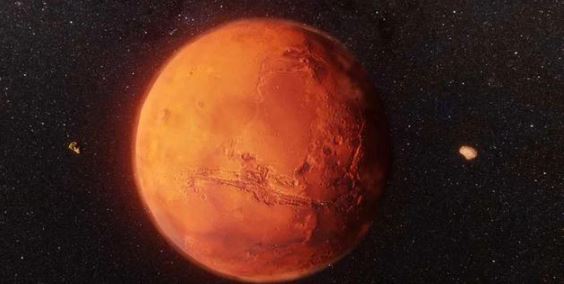
Mars, the fourth planet in the solar system, now presents a desolate landscape with a dry surface covered in sand dunes and rocks, as if it were a huge desert. However, scientific research shows that Mars billions of years ago was not like this.
At that time, Mars had a thick atmosphere similar to Earth, a warm climate, and a large amount of liquid water.
Because there are many river valley landforms on the surface of Mars that resemble Earth, this indicates that liquid water once flowed on the surface of this red planet. In addition, scientists have discovered many minerals on Mars that can only form in the presence of water, such as clay and sulfates.
These findings strongly suggest that Mars once had a large amount of liquid water and may have had vast lakes, rivers, and even oceans.
However, approximately 3 to 4 billion years ago, Mars underwent a series of catastrophic events that completely changed the fate of the planet. Scientists believe that the dramatic changes in the Martian environment began with the collapse of its global magnetic field. Magnetic field is a key barrier that protects planetary atmospheres from solar wind erosion.
As the core of Mars gradually cools down, this protective barrier begins to weaken, causing the Martian atmosphere to be gradually stripped away by the solar wind.
With the loss of the atmosphere, the pressure on Mars significantly decreases and the climate becomes increasingly cold. Causing liquid water to evaporate and escape into space, while some freeze into ice and are buried beneath the surface or in polar ice caps. This process transformed Mars from a warm and humid world to today’s dry and cold desert planet.
Although scientists have long speculated that there may be water resources underground on Mars, there was no substantial evidence before. However, recently scientists have made a remarkable breakthrough. NASA’s “Insight” lander discovered a large amount of liquid water existing underground on Mars while exploring its internal structure, with depths ranging from 11.5 to 20 kilometers, reaching a depth of 1 kilometer.
And this discovery was achieved through a method similar to seismology. Scientists use the seismic data collected by the Insight mission on Mars to analyze the behavior of seismic waves propagating in different media, thereby inferring that there are characteristics similar to liquid water underground.
According to speculation, the existence of this underground ocean may be related to geothermal activity underground on Mars. Because geothermal activity provides sufficient temperature for groundwater to remain liquid. Surprisingly, this amount of water is enough to cover the entire surface of Mars, opening a whole new door for future research on Mars.
The discovery of groundwater resources has also raised an extremely important question: is there life in this underground ocean? If there is life in the underground ocean of Mars, it will mean that Earth is no longer the only planet with life.
In fact, the existence of life on Mars has always been a focus of scientists’ attention. If life is discovered in the underground ocean of Mars in the future, it will change our understanding of the possibility of life in the universe. Future Mars exploration missions will continue to delve deeper into this issue. But regardless of the outcome, these explorations will greatly enrich our understanding of Mars.
发表回复